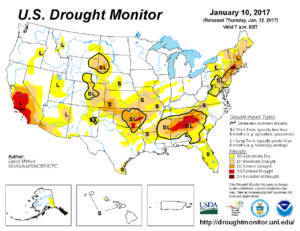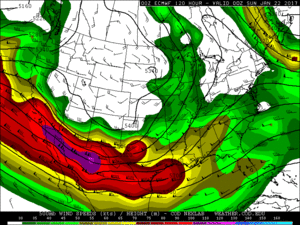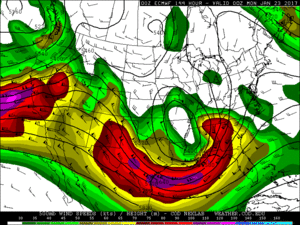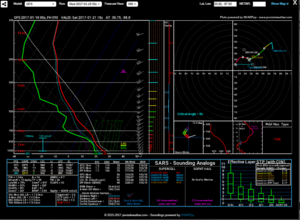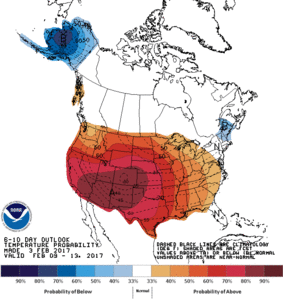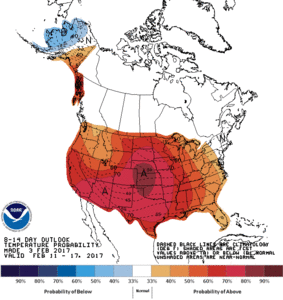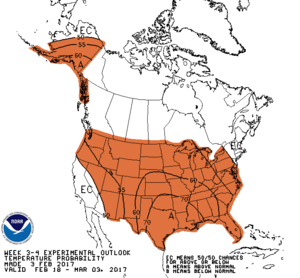We are off to an ingesting start for sure. I too was wondering what this might mean for the upcoming season, so I did some research. Many of you are likely aware of the Allen, Tippett, Sobel study published in Nature Geoscience in 2015 (Influence of the El Niño/Southern Oscillation on tornado and hail frequency in the United States
http://www.nature.com/ngeo/journal/v8/n4/full/ngeo2385.html). While you have to pay for full access (or find a library that subscribes), the abstract gives you some clues: “We show that fewer tornadoes and hail events occur over the central US during El Niño and conversely more occur during La Niña conditions. Moreover, winter ENSO conditions often persist into early spring, and consequently the winter ENSO state can be used to predict changes in tornado and hail frequency during the following spring.”
Cook and Schaefer point out that “researchers do not agree on the seasonal and monthly variations of tornado activity as a function of ENSO phase” in their paper (The Relation of El Nino Southern Oscillation (ENSO) to Winter Tornado Outbreaks,
http://www.spc.noaa.gov/publications/cook/ensowntr.pdf) but do conclude “a statistically significant trend for stronger, longer-track tornadoes to occur during LN and neutral winters compared to EN winters is seen.” They go on to note that the most likely zones for tornados vary depending on ENSO phase.
So given our current LN phase and the results of those two studies, one could reasonably hypothesis that we would see stronger longer-track tornados, more tornados in the spring, and the zone of most activity would occur “in a southwest to northeast belt that stretches from the Mississippi Delta to the Central Great Lakes region”.
That may not be a good hypothesis after all. NOAA’s Climate Prediction Center says “a transition to ENSO-neutral is expected to occur by February 2017, with ENSO-neutral then continuing through the first half of 2017.” (
http://www.cpc.ncep.noaa.gov/products/analysis_monitoring/enso_disc_jan2017/ensodisc.shtml).
So I took a look at some localized data (
http://www.weather.gov/fwd/fwdtornadoes) to see what I could learn form that. In 2017, there have already been 6 tornados in January in the FWD CWA. Going back to 1950, only 11 years prior to 2017 had January tornados. Of those years, 5 where EN, 3 where LN, and 3 where N (a surprise based on the Allen study). The average number of tornados per year in the FWD CWA is 25.5. Of the 11 years with Jan tornados, 5 where bellow average years and 6 are above average years. It is important to note that the lowest bellow average year was only bellow by 5 tornados. Of the above average years, only one year has 1 standard deviation above average (1996 which had 51). 3 years had 10, 12, and 13 more tornados each and the other 2 where barely above average. I should note that as one goes back towards 1950 in the pre cell phone days, the number of tornados is likely underreported.
Bottom line to me – this is fun to talk about, and I remain optimistic about the coming season, but I don’t think we can draw too many conclusions right now. For one, we may be ENSO neutral by spring. For another, the effects of ENSO on tornado counts in any given area are still a subject of great debate. We wouldn’t use the GFS 384 hours out to pick a target area, so we probably should not get too excited or depressed over the chase season this early either.
